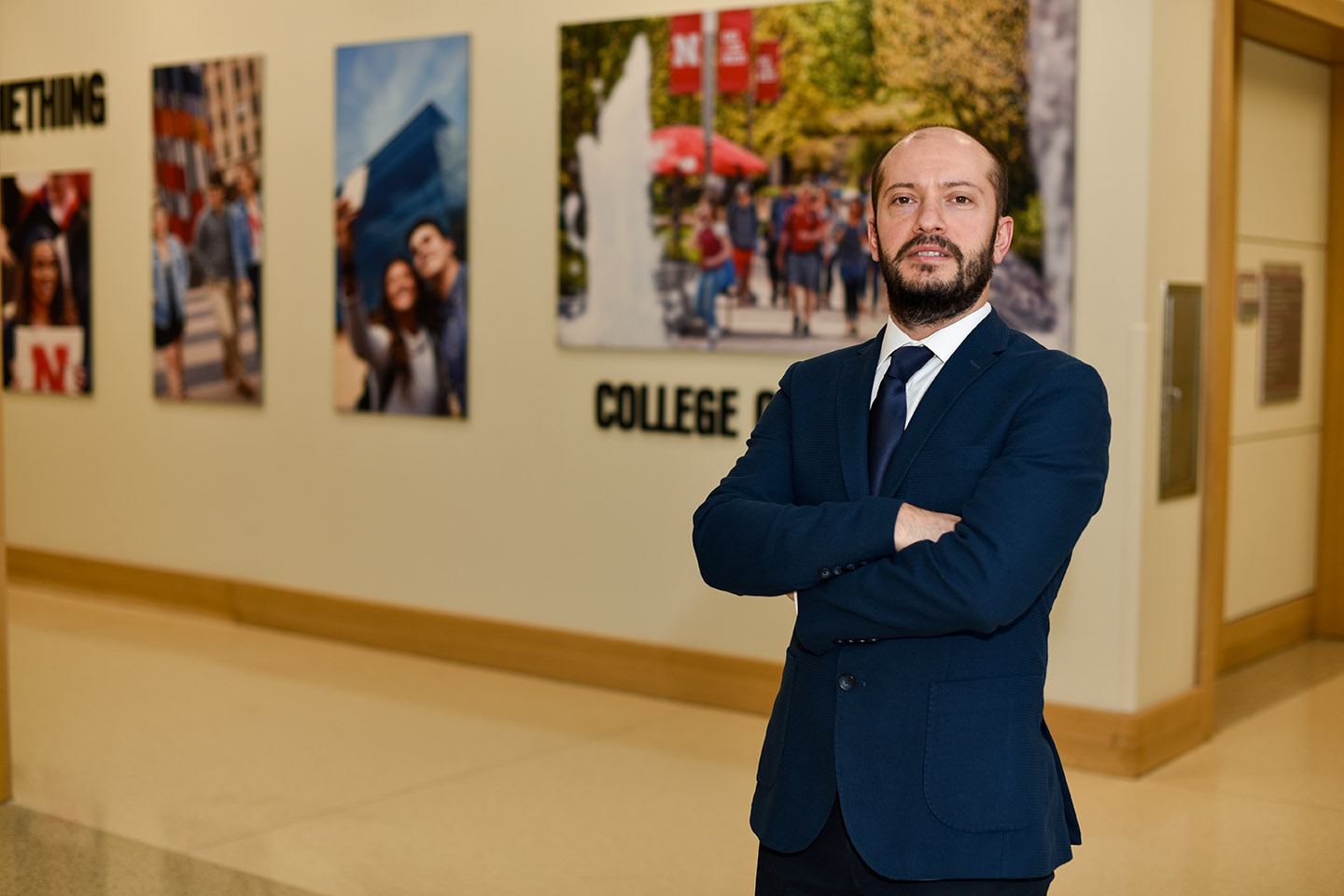
Schools close, elderly populations are isolated and businesses shut down due to the coronavirus pandemic spreading across the planet. Dr. Özgür Araz, associate professor of supply chain management and analytics and Robert B. Daugherty Water for Food Institute Faculty Fellow at the University of Nebraska–Lincoln, believes decisions imposed to change the way we live in the short-term stem from critical research analysis now in the hands of government and health care providers.
“I am confident health agencies like the Centers for Disease Control and Prevention (CDC) know what they are doing,” said Araz, whose research examines decision sciences specifically related to health systems, including pandemic decision-making.
Araz teaches predictive analytics at the College of Business. He knows the impact his work can have on the profitability of business and also what it can do to save lives in a time of crisis.
“People don’t always think about how analytics tools and supply chain management can be used for the public good. We use predictive analytics for mitigating pandemics and supply chain management to use public resources more effectively,” Araz said.
His most recent article published in Decision Sciences in November studies capacity optimization under resource shortages. Previously, he looked at challenges of stockpiling ventilators for influenza pandemics and school closure policies for cost effective pandemic decision-making.
“We’ve had school closings before but nothing like this,” said Araz. “We know the coronavirus has higher fatality rates than the H1N1 influenza in 2009. When you don’t know much about the virus, you need to gain time for the health care system to prepare itself to provide the most effective response. Social distancing measures are critical for gaining the time to better understand what’s happening.”
Araz explained economic impacts are taken into consideration when modeling effective decision making.
“We want to answer whether school closings and social distancing policies are cost effective. Both questions of when to close schools and when to reopen are equally important. We take information about how fast the virus is spreading using a basic reproductive ratio and estimate the number of secondary cases generated in the susceptible population. In the case of the coronavirus it’s spreading fast,” he said.
The data also shows a high fatality rate among older population groups according to Araz. He sees health officials using predictive analytics to ensure the public safety is optimized through modeling tools developed through research like his own.
“People say it costs a lot, but if we save more lives, it makes it cost effective. Optimizing social distancing intervention depends on this research modeling. We take a societal perspective regarding life lost, parents staying home with children impacting the workforce and all the other factors we are dealing with today. In severe cases we might need prolonged closures and even 24 weeks of closings can still be a cost effective result.”
Dr. Jennifer Ryan, chair and Ron and Carol Cope Professor of Supply Chain Management and Analytics, explained that in addition to informing the social distancing response, Araz’s research helps CDC officials prepare for situations in which hospitals and clinics are overwhelmed by an influx of patients.
“We’ve all heard the discussions of ‘flattening the curve’,” Ryan said. “The modeling tools Özgür developed can provide critical insights into how we best allocate scarce resources during a pandemic. Unlike business problems, where the objective is typically measured in dollars, societal problems often involve complicated trade-offs between costs and benefits measured in lives lost or quantities related to quality of life.”
Araz’s undergraduate and master’s degrees were both in industrial engineering, which also relies heavily on system modeling. His interest in pandemic research began while working on his doctorate and National Institutes of Health (NIH) grant funds became available for emergency preparedness.
“What keeps me going in this area is my interest in the dynamics of the situation we are currently facing which has a lot of uncertainty," Araz said. "Studying how we can use analytical tools to solve these important problems involving the basic science of disease biology along with social and population dynamics is challenging and exciting to me."
Some of Araz’s research articles related to his work on pandemics include:
"Simulating school closure policies for cost effective pandemic decision making," BMC Public Health.
“Stockpiling Ventilators for Influenza Pandemics,” Emerging Infectious Diseases.
“Decision Assessment Algorithms for Location and Capacity Optimization under Resource Shortages,” Decision Sciences.